Paint comes in different sheen levels; some popular options are satin and flat paint finishes.
Every one of these paint types comes with a set of limitations and plusses that can make it better than the other for specific applications.
Understanding the specific characteristics of the various paint types can help you choose a more suitable option for your project.
This article compares flat vs satin paint finishes to draw out their differences and make choosing the most suitable finish for every application easier.
The article also includes the pros and cons of each paint type and a detailed comparison of their characteristics.
What is the Difference Between Flat and Satin Paint?
The main difference between satin and flat paint finishes in the sheen levels. A satin paint finish has a bit of sheen, which is lacking in flat paint finishes. As the name suggests, the latter finish is matte or flat. Even though a satin finish paint has a touch of sheen, the shine is less than a semi-gloss paint, just as semi-gloss paint is less shiny than gloss paint.
So, if you were to rank the sheen levels of different paint types from the shiniest to the least shiny, you would begin with gloss (or high gloss) paint, semi-gloss paint, and satin paint.
Eggshell and matte or flat finish paint would be at the bottom of the list since they barely have any sheen.
What is Flat Paint?
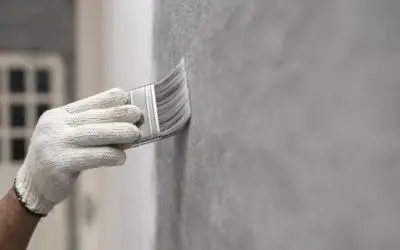
This is a type of paint with no sheen. Flat or eggshell paints have a matte finish, reflecting very little light off the painted surface.
This flatness results from the paint having more pigment than binder in its formula.
The more pigment the paint contains relative to the binder, the flatter it will appear.
So, flat, non-reflective paints contain the greatest amounts of pigment with the least amount of binder.
Such paint types offer exceptional coverage with a highly uniform look on the painted surface, thanks to their low reflectivity.
On the flip side, flat paint is less durable than its more reflective cousins.
The surface may also feel slightly rough and chalky, with a velvety appearance.
This rough texture makes flat paint surfaces more challenging to clean, especially by wiping them with a damp cloth.
Therefore, cleaning such surfaces often requires using a pressure washer or scrubbing with a cleaning product such as TSP.
Your option for accumulated dirt may be limited to laying down a new coat of paint. This characteristic makes flat paint more challenging to maintain.
Flat paint pros and cons
Pros
- The non-reflective surface does an excellent job of hiding bumps, scratches, and other imperfections.
- The paint is easier to apply than glossier paint types.
- The paint boasts a higher amount of pigment, leading to improved coverage. So you may get away with fewer paint coats and save on project costs.
- The paint allows for easy touchups that blend in seamlessly.
Cons
- The surface tends to absorb the dirt when wiped or washed to clean it. This quality makes it harder to clean and maintain.
- Flat paint does not resist moisture, which can result in mold and discoloration in damp environments.
What is Satin Paint?
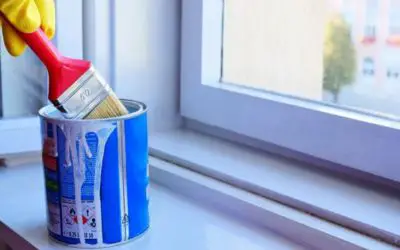
Well, satin paint is the least reflective type, below semi-gloss and high gloss. Even though the surface reflects some light, the amount reflected is little compared to other reflective surfaces.
However, satin paint reflects more light than flat paint because it has some luster, which matte finishes do not have.
Because the light reflected off satin paint is little, so the surface tends to appear velvety with a gentle sheen.
Satin finishes get their surface characteristics from their formula’s relatively higher binder levels.
They contain significant amounts of pigment but slightly higher binder levels than flat paint.
Because of the slight reflectivity of these surfaces, bumps, dents, and other surface imperfections may show more than they would on a matte finish.
You can also expect the satin paint color to appear richer than a corresponding flat finish.
Satin paint pros and cons
Pros
- The paint has some luster, making it easier to clean than flat paint
- The finish offers some moisture resistance, which can thwart the growth of molds
- It offers moderate coverage
- The paint is highly durable
Cons
- Satin paint is more challenging to apply than flat paint. Mix it thoroughly and always keep a wet edge for the desired results.
- Dents and other surface imperfections are more noticeable on satin surfaces.
- This paint is slightly more expensive to purchase.
- It requires a bit more care during touchups.
Satin vs Flat Paint Side-by-Side Comparison
We have mentioned that flat and satin paints differ regarding sheen levels.
However, these two paint types are not the only distinguishing characteristic.
They have many characteristics that set them apart and may help determine which paint is more suitable for a particular application.
This section dissects each paint type and examines its key features, comparing it with the others to make a side-by-side assessment.
1. Flat paint vs satin paint: Uses
People typically use paints with various sheen levels on various applications depending on their preferred finishes.
However, specific areas work better with flat paints, while others are better suited for satin finishes.
For instance, satin paint is typically the preferred choice for high-traffic areas.
It is also a more suitable finish for moisture-prone areas due to its moisture resistance.
For this reason, satin paint is commonly used on doors and windows. You will also typically find it on molding, trim, hallways, and in kids’ bedrooms, where the durability of the paint is crucial.
Some homeowners, especially with kids, also prefer satin finishes for their living rooms.
Pets and kids use the space frequently, making it necessary to use a more durable paint option there.
On the other hand, flat paint works best for ceilings and low-traffic areas. Because ceilings are located out of reach of most pets and human traffic, the visual appeal of the matte finish makes it ideal for the location.
Some people also choose flat paints for guest bedrooms and master bedrooms, home offices, and formal dining areas that experience less traffic.
People who set aside their living rooms for more formal uses can also use flat paint in this area without problems.
2. Satin vs flat finish: Appearance
Both flat and satin paints are strong-colored due to the high levels of pigment in both. However, satin pain has slightly more binder in its formula.
This feature makes it more lustrous than flat paint.
Rooms or spaces with satin paint will, therefore, likely appear more spacious than those with flat paint due to the former’s light-reflecting qualities.
Light reflectivity off the walls of a room tends to give it the feeling of depth.
While both flat and satin paints may appear velvety with a noticeably rough texture, satin will have a sheen, which flat paint lacks.
Flat paint does not have any sheen or luster because it has very little amount of binder.
Neither paint is highly glossy. So, they may appear almost similar to some people, as the reflectivity of a satin surface is barely noticeable under some lights.
The painted surfaces will look similar under some lights, while they will appear different under other lights.
If sufficient light hits a satin pain surface, its reflectivity will become more apparent, setting it apart from a flat paint of a similar color.
However, light has little effect on a surface with flat paint. So, such a surface will typically look the same in different lighting conditions.
3. Satin paint vs flat paint: Durability
Satin paint contains a higher percentage of binder, which makes it more flexible and tougher than flat paint.
Therefore, the paint tends to be more resilient and likely to withstand wear and tear better and for longer.
Because satin paint is more durable than its flat cousins, it is usually preferred for high-traffic areas where that resilience is handy.
In contrast, flat paint contains less binder, making it more susceptible to wear and tear.
It is less durable and will not stand up well to regular wear. For this reason, the paint is typically preferred for low-traffic areas and places such as ceilings that are out of reach of pets and people.
The small amount of binder in flat paint also makes it less flexible. This translates to reduced resilience and a lower toughness rating than satin paint.
Because flat paint is not tough enough, so you can expect it to sustain scratches, dents, and dings more easily than the more resilient satin paint.
4. Flat vs satin finish: Sheen level
Both satin and flat paints are low-gloss finishes. However, their gloss levels differ due to the binder levels in each painting.
Satin paint contains more binder, giving it more luster than flat paint.
This luster means the paint will have a glossier finish than the flat option. Flat paint has practically zero lusters.
It has a matte finish, with no light reflectivity on surfaces where it is used.
Overall, flat paint forms the least glossy finish on surfaces. Such a painted surface does not reflect light as glossy does.
Still, you may have to touch the surface to feel the coarseness of its texture, as the matte finish still looks pretty smooth and velvety to the eye. Want to make it shiny? Here is how to make matte acrylic paint glossy.

5. Satin paint finish vs flat: Maintenance
The slightly lustrous sheen of satin paint makes it relatively easier to clean and maintain than flat paint.
You can clean a surface covered in satin paint by wiping it with a damp cloth.
For stubborn stains, soap, and water usually get the job done. All you have to do is saturate a sponge with the soapy solution and use it to clean the painted surface.
However, this method is typically ineffective for flat paint surfaces that trap dirt in their textured surface.
Wiping flat painted surfaces often only spreads the dirt, smearing it onto the surrounding areas.
Flat surfaces also do not stand up well to wear and tear, so they are prone to scratches and dents.
These imperfections make the surface more vulnerable as the paint can easily come off when scrubbing it to clean it.
Chipping and denting are less common with satin paint since the coat is sturdier and stands up well to wear and tear.
6. Satin or flat paint: Ease of use
Flat paint is generally easier to use than satin paint. When painting, the non-reflective sheen makes flat paint appear more uniform without showing lines on the surface.
You do not have to struggle to achieve that uniform look because any lines remaining on the finish will not show.
Working with flat paint is less demanding because the paint tends to blend in easily even if you do not keep a wet edge, and wet paint ends up crossing over dry.
This way, you can apply flat paint relatively quickly. In contrast, any lines left while applying satin paint will be noticeable.
So you may have to take several minutes to perfect the finish, leaving no visible lines and achieving a uniform look.
When making touchups with satin paint, you may spend a lot of time and still end up with noticeable lines between the old and new paint. The paint does not blend in well.
Touched-up spots tend to stand out against the rest of the surface, with noticeable differences in sheen. Applying sating paint may require using specific applicators over others.
For instance, using a roller to apply fresh paint in straight lines may produce better results than a paintbrush when working with satin paint.
Using a paint sprayer may also help you achieve even more coverage in less time.
The sprayer does an excellent job applying the paint without creating any visible lines on the surface.
7. Satin finish vs flat: Hiding imperfections
Flat paint better hides imperfections on the painted surface than satin paint, whose glossiness highlights wall imperfections.
While satin paint is less prone to denting and chipping, any scratches sustained will appear more conspicuously than on a flat surface.
Satin paint reflects more light, making imperfections on the painted surface more noticeable than the flat paint surface that does not reflect as much light.
In addition, the light bouncing off the dents and scratches on a satin surface makes them more visible.
Because flat paint is not reflective, little light bounces off its imperfections. This quality helps make these imperfections harder to notice.
8. Flat or satin paint: Coverage
Flat paint is loaded with pigment, with the binder taking only a small percentage of the product.
For this reason, flat paint generally offers superior coverage than satin. In addition, the extra pigment in flat paint ensures more color for every coat you lay.
This quality means you can get away with fewer coats when you use flat paint because just one or a few coats provide the desired color depth and coverage.
On the other hand, satin paint consists of more binders, which trade places with pigment. So you may have to apply more paint to reach full coverage.
Binders do not contain the paint color, so the more the binder, the less the coverage, and the more the product you must apply to reach full coverage.
9. Flat vs satin interior paint: Cost
Flat paint tends generally costs less than satin, which is moderately priced.
Even where satin paint is not expensive per se, a can of this paint typically costs more than an equivalent can o flat paint.
The price difference is generally small, but it can drastically add to significant savings if you are painting a large project involving several cans of paint.
Flat paint typically costs about 5 dollars less than satin per can. If your project requires as many as ten cans of paint, this amount will add up to 50 dollars, and more or less if the project is bigger or smaller respectively.
Notice that flat paint is also high-coverage, meaning it saves you money in two ways by allowing you to use less paint and by costing less money upfront.
On the other hand, satin paint is relatively low coverage, so your project may require more paint.
This means you may use more paint to complete a single project and spend more money to purchase the paint upfront.
10. Moisture resistance
Thanks to the higher levels of binder in satin paint, it can withstand moisture better than fat paint, which tends to be vulnerable to water and moisture.
Surfaces covered in satin paint will be better protected against water and moisture damage, which can translate into better resistance to mold.
Because flat paint has less binder, it tends to be significantly porous and vulnerable to moisture.
Surfaces with this paint may not adequately resist moisture and water damage.
When washed with water, the coat may allow some water through to the substrate, likely damaging it.
This resistance to moisture makes satin more suitable for damp environments like kitchens and bathrooms.
However, using flat paint in damp places can cause premature damage, mold, and mildew problem.
Can You Make Flat Paint Satin?
Yes. You can easily make flat paint satin or vice versa by altering the amount of binder and pigment in the paint.
The ratio of pigment to binders and resins in the paint determines its sheen level. Paint with a high level of pigment and a small level of binders or resins will be flat.
However, if the paint has a high level of resins or binders, it will appear high-sheen or glossier.
So, to make a flat paint satin, you only need to increase the level of binders or resins in the paint.
And to make a satin paint flatter, increase the amount of pigment in it. Notice that altering the ratio of pigment to binders in the paint will affect its durability.
Technically, glossier paints outperform flatter ones in durability. Flatter paints have better coverage because of the greater amounts of pigment but are less resilient.
So, with this understanding, you can play around with the ratio to make the sheen flatter or glossier and create your preferred paint sheen.
How to Make Flat Paint Satin
Theoretically, you can make flat paint satin by increasing the binders or resins.
You can also make the satin paint flatter by increasing the pigment. But how precisely do you do either of these?
Here are a few ways to make a flat paint satin:
Mix a flat paint with a higher-gloss paint
Mixing a higher gloss paint with a flat one will result in an intermediate sheen, especially if you mix the two paints in a 1:1 ratio.
Paint sheens range from gloss, semi-gloss, and satin to flat. So, to create a satin paint, the best idea is to mix a semi-gloss option with a flat to get an intermediate paint sheen, which is satin in this case.
While mixing, notice that the two paints must be compatible. Paint compatibility must be your primary consideration when mixing two paints to achieve an intermediate sheen.
For instance, mix latex semi-gloss paint with latex flat paint to create a custom usable satin sheen.
The results will be even better if both paints are of the same brand from the same manufacturer to guarantee the same formula.
Do not try to mix interior paint with exterior grade paint. Neither should you try to mix oil-based paint with latex or water-based option. Such will not work.
Add varnish or a glazing compound
Mix varnish or a glazing compound with a flat paint ratio of 1:10 to make it satin. The varnish will introduce glossiness to the paint.
Mix thoroughly after adding the two products to create a uniform mixture.
Since you are creating a custom product, you can increase the ratio to make the resulting paint glossier.
Adding more glazing compound will make the paint glossier, so it will be upon you to decide how much sheen you want.
But for a satin look, stick to a 1:10 ratio.
Seal the painted surface with a clear coat
Finally, if you are working with an already painted wall or surface, you can still make it glossier by applying a coat of clear-colored sealant over the flat paint.
In this case, you can use a water- or oil-based clear coat without worrying about compatibility.
Sealing the surface with a clear top coat will save you from stripping down the paint and redoing the entire project afresh.
FAQs
What is satin paint used for?
Satin paint is typically used to cover relatively high-traffic but low-impact surfaces such as windows, doors, door casings, and trim.
When should you use flat paint?
You should use flat paint when working on low-traffic areas like the master bedroom, formal living room, or study room.
Should you use flat or satin for walls?
For a new wall, satin paint should give better results with a smooth surface and professionally looking results. However, a surface with imperfections, such as cracks and bumps, will be better off with a flat paint that does an excellent job of hiding the imperfections.
What does flat paint look like?
Flat paint has a velvety and matte look. It doesn’t show dust and dirt as easily as glossy paint, making it a popular choice for people who don’t want to spend a lot of time cleaning. Flat paint is less likely to show marks or streaks from everyday wear and tear.
What does satin paint look like?
Satin paint looks like velvet. It has a nice sheen that makes the walls look luxurious and expensive. The paint can reflect light in a way that makes the walls look almost three-dimensional. It is the best choice if you want to add some glamour to your home.
Is satin paint flat?
No, the satin paint is not flat. It has a more silky sheen and usually a low-gloss finish. This makes it less reflective than glossy paints, but it’s not completely matte. Plus, it’s designed to have a more luxurious look and feel than traditional flat paint.
Is satin paint easy to clean?
Yes, satin paint is easy to clean. It doesn’t have a shine of a gloss finish, so it’s not as reflective and therefore doesn’t show fingerprints and smudges. Also, dirt and dust don’t tend to slide off it as easily because it isn’t as slick as a gloss finish.
Does satin paint show imperfections?
Yes, satin shows imperfections. This is because it has a medium gloss sheen that’s shiny. While this is not shiny as semi-gloss paint, it can highlight imperfections. Any imperfections on the wall will be more visible than with other types of finishes like egg shell or semi gloss.
What is the difference between satin black vs flat black paint?
The difference between satin black and flat black is that satin black has a little bit of gloss, while flat black is completely clear. Flat black paint will give your surface a stealthy look, as it will not reflect light like satin black paint.
What is the difference between flat white vs satin white?
The difference between flat white vs satin white is that flat white has no gloss completely, while satin white has a low gloss finish. Flat white is completely matte, while satin white has a subtle shine.
Flat Vs Satin Paint: Which is Better?
Flat and satin paints are more suitable for specific applications, with neither flat nor satin paint being better for all applications.
Consider using flat paint when working on low-traffic areas like the master bedroom, formal living room, ceiling, or study room.
On the other hand, use satin paint on relatively high-traffic but low-impact areas or surfaces like windows, doors, door casings, and trim.
Using the right paint in the right situation will give you the best outcome and value for your money.
We hope you find this guide useful and that it helps make your next paint job successful.


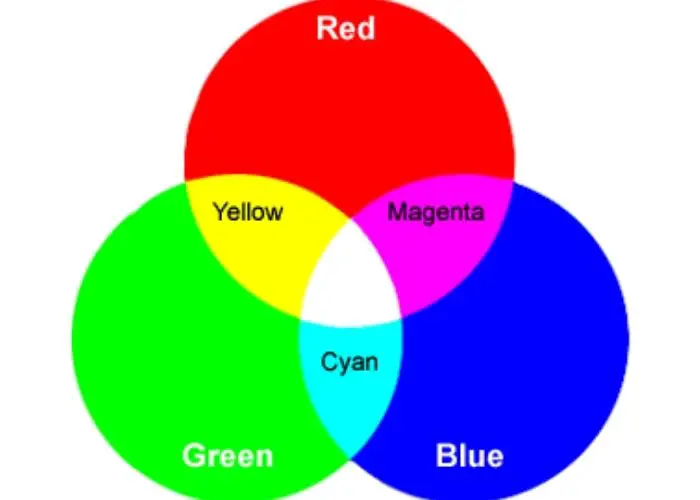
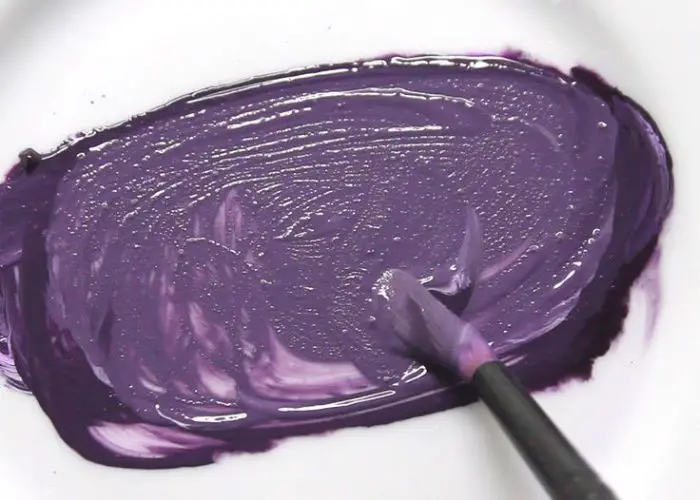





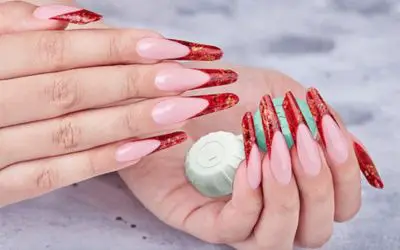
Leave a Reply